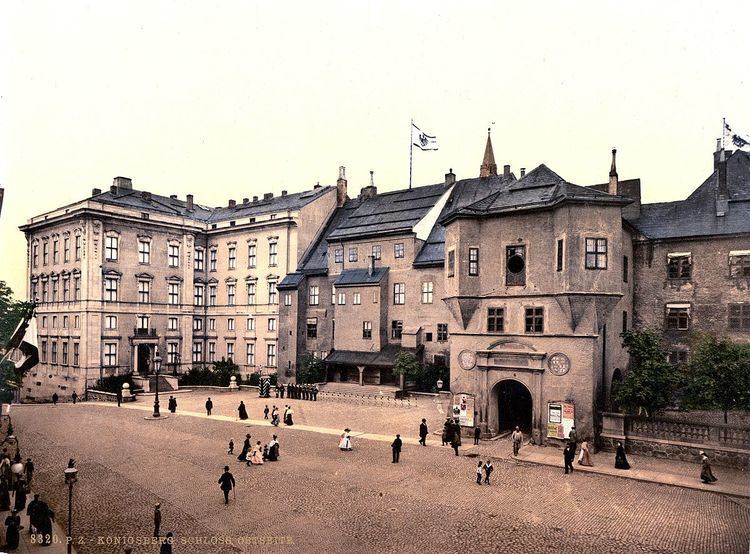Name Joachim Schultheiss | ||
 | ||
Joachim Ludwig Schultheiss von Unfriedt (variations include Schultheis and Unfried, 1678 – 10 June 1753) was a German Baroque architect, official, and councillor most active in Konigsberg and throughout East Prussia.
Contents
Life
Possibly born in Altruppin, Brandenburg, Schultheiss was the son of Joachim Scultetus von Unfried, a privy councilor of Frederick William I, Elector of Brandenburg. He began studying at the University of Frankfurt (Oder) on 23 August 1689 and continued his studies in Italy and France. He became Royal Prussian Engineer and Building Master (Kgl. Preus. Ingenieur und Baumeister) in Konigsberg on 9 January 1702. Schultheiss oversaw the transfer of material from the declining castle in Fischhausen to the fortifications of Pillau until 1705. He was then named Building Director (Baudirektor) on 11 June 1705.
From 1705-13 Schultheiss focused on renovating Konigsberg Castle, especially an east wing which was alternately referred to as the Friedrichsbau, the Unfriedbau, and the Unfriedflugel. From 1705-10 he worked on the galleries, royal lodge, and pulpit-altar of the Schlosskirche, the church connected to the castle. Schultheiss designed the Royal Orphanage in Sackheim (1703–05), Tragheim Church (1708–10), and the Brauerhaus in Lobenicht. From 1704-05, along with Jean Baptiste Broebes and Johann Caspar Hindersin, he also aided in the transition of the manor house in Schlobitten into a palace of the Dohna family. In 1708 he renovated the church of Kaukehmen.
After the coronation of King Frederick William I of Prussia in 1713, Schultheiss took the position of building director in Berlin. He returned to Konigsberg after taking the position of building director for the Oberland district on 18 January 1721. The king, who was focused on the recovery of East Prussia after the great plague of 1708-11, tasked Schultheiss with designing the new towns built in the province. He became the most important architectural official in East Prussia and a member of the Kriegs- und Domanenkammer after the king's reorganization of government in 1723.
Schultheiss designed or altered the layouts of numerous East Prussian towns, including Stalluponen (1722); Darkehmen and its 13 morgen market square (1723); Ragnit's old town (1723); Gumbinnen's old town (1724), new town (1727), and town hall (1727); Schirwindt and its market square (ca. 1725); and Pillkallen (ca. 1725). Ca. 1730 he possibly worked on the family grave of Friedrich von der Groeben at the church of Gros Schwansfeld. From 1731-32 he oversaw the rebuilding of the church in Drygallen. Schultheiss designed the Neustadter Reformierte Kirche in Gumbinnen from 1736-39.
In his second period in Konigsberg, Schultheiss designed the incomplete Garnisonkirche (garrison church) of the Konigsgarten (1731) and the French Reformed Church (1733–36) on Konigstrase. He died in Konigsberg.
